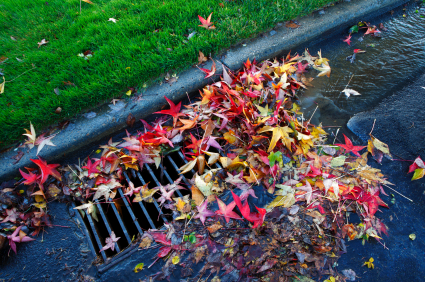
When drivers see water rushing down the roadside drains, they thank the Divine the water isn’t making them hydroplane. After that, the storm runoff doesn’t impact their mind. It should. With only 1/3 of the Earth’s water drinkable, every drop that can be scrounged can contribute to the supply of drinkable water. Nor are humans the only beings that drink water. Storm runoff should matter to everyone.
Why This is a Problem
Rainwater washes unpleasant things off surfaces and into storm drains. People don’t think where the water coming out of their gutters through the drain pipes go. It soaks into the ground and runs off into lakes and streams. Oils and chemicals from cars on roads and driveways aren’t the only pollutants carried in storm runoff, however:
- Failing septic tank wastes
- Lawn and garden chemicals and fertilizers
- Viruses and bacteria from pet waste
- Metallic particles from roofs and vehicles
Where Storm Runoff Goes
No one recognizes that rainwater goes into lakes, streams and rivers to provide water for animals and birds. No one even thinks that the oils, dirt and silt that runs off parking lots and driveways runs into the storm drains in the water. It impacts not only the water supply, but the ground of parks and playgrounds as well as vegetation everywhere. This is, perhaps, a form of pollution that exists beneath the consciousness of the people.
What is Being Done About It?
Homeowners are encouraged to wash their cars at car washes with water treatment facilities. They are advised to bag their pet waste, and dispose of it with the trash. Keeping an eye on the septic system that it doesn’t fail, and only using organic matter on lawns and plants will help also.
What Else Should We Know?
Not enough attention is paid to Stormceptor units. Hardly anyone knows they exist, and that they are helping clean the water supply. People should recognize and appreciate the companies that maintain Stormceptor units. If there is a storm drain and catch basin, there is usually a commercial enterprise nearby. Many of the businesses aren’t even aware that they exist. Nor do commercial enterprises know when or even if the catch basins should be maintained. Awareness should be the first thing people need to know.
The units are generally installed near the storm drain to catch sediment and oils before they settle in the drains. The water flows through the unit, where a compartment separates the oils and sediment, then returns the clean water through the exit spout. The first year they are installed, they should be inspected each six months. When the level of sediment builds up to around 15 percent, it should be cleaned. Then companies will know how often in subsequent years to have the unit maintained, remembering to check local regulations for specifics. If an oil or chemical spill occurs, have the unit cleaned immediately.
Vactone is such a Stormceptor maintenance company. There are other oil-water separators called Downstream Defenders, Vortex and Hydro-guard. Vactone will examine your storm water oil-water separation system to know what type it is.
Our personnel are factory-trained to evaluate and maintain whichever system you use. We will perform scheduled cleaning as well as emergency cleaning. We will explain and provide preventive measures to ensure your system remains in working order without the damage backups can cause. To become aware of which system you use, contact us for more information.
